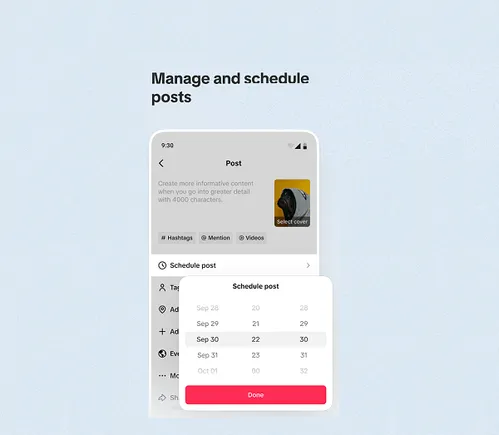Employee loyalty is markedly different than when my career began. The expectation of a two- or three-decade stint at the same company is almost unheard of. What now counts as a career is less about where someone starts their professional life and more about an inventory of experiences and skills mastered along the journey.
For high-value, high-impact employees, there are pros and cons to this phenomenon. But for companies looking to retain their best and brightest, it presents a challenge.
One recent survey points to a possible solution. It found that an astounding 94% of employees would stay at a job longer if they were offered training and development.
If it were up to me, the word “training” wouldn’t be the focus. It feels altogether too task oriented and transactional. Development and growth are really what we’re each after. Growth across both professional and personal dimensions of our lives as they are becoming increasingly intertwined.
Every organization wants to be growth oriented. Yet few realize or operate as if one of the most important missions of growth is the advancement of the individual in the context of their careers, not just their job.
As CEO of AT&T Business, I was part of the founding governing board of what we called AT&T University – the company’s leadership development platform. We took a systemic approach to the growth of our leaders, providing them in-person and virtual experiences in key areas such as trust and values. In addition, as part of all of my executive positions, I created a future leaders program to complement efforts at the corporate level, asking all of my direct reports to nominate candidates. I wanted to more actively create a pipeline of growth for leaders who’d demonstrated strong performance and showed excellent potential. They were given access to executives across the company, creating networking opportunities outside of their immediate work group, as well as specialized training opportunities to get them ready for bigger roles.
I’m now seeing this firsthand in one of my new roles, as an adjunct professor/executive education at Northwestern University’s Kellogg School of Management. I’ve had the opportunity to teach wonderfully diverse cohorts of students from all over the world who hail from nearly every point in their careers, from individual contributors to middle managers to CXOs.
Some enrolled after deciding to invest in themselves. Others attended because they were supported by their organizations. Among that group, I can tell you that quite a few acknowledged that the sponsorship – aligned with the belief that further development would be good for both them and their employers – had a significant impact on their satisfaction on the job and their confidence that their company truly cared about them.
This group of students is essentially confirming the results of the survey I cited earlier. An investment in their further development is often the biggest reason they’ve chosen to remain with their organizations. That sort of ROI is hard to quantify. Yet it’s only half the story.
The remainder is what that development of middle managers, executives or even CEOs means to the sponsoring company—especially in an age when the advances in artificial intelligence are rapidly influencing an array of industries and the job market at large. I’m not one of these people trying to make a career off of saying that AI is going to end yours. It can certainly do amazing things with existing information. AI connects the dots it’s given.
What it can’t do yet, or anytime soon, is the sort of complex, dynamic and nuanced human decision-making that the modern workplace increasingly requires. This is precisely what employee and leadership development is made to do – continue to evolve those who have performed well in their careers, and invest in their potential to have an even greater impact.
Footing the bill for further career development accomplishes two goals. It shows your talent a level of investment and conviction that inspires degrees of loyalty not often contemplated in the modern era. And it also prepares those employees more likely to stay with a growing skill set more apt to match what the future needs.
Whether it’s called development, growth or at the very least, training, there is nothing that inspires allegiance quite like an investment in this most precious resource. Sponsoring your team members to acquire a new certification or even a one- or two-year degree is not a cheap nor easy endeavor. But in the competitive reality of attracting and retaining top talent, it’s well worth every penny.
The post In An Age Of Dwindling Loyalty, Here’s The Key To Retaining Top Employees appeared first on ChiefExecutive.net.























































![Social Media Spring Cleaning [Infographic] Social Media Spring Cleaning [Infographic]](https://imgproxy.divecdn.com/9e7sW3TubFHM00yvXe5zvvbhAVriJiGqS8xmVFLPC6s/g:ce/rs:fit:770:435/Z3M6Ly9kaXZlc2l0ZS1zdG9yYWdlL2RpdmVpbWFnZS9zb2NpYWxfc3ByaW5nX2NsZWFuaW5nMi5wbmc=.webp)
![5 Ways to Improve Your LinkedIn Marketing Efforts in 2025 [Infographic] 5 Ways to Improve Your LinkedIn Marketing Efforts in 2025 [Infographic]](https://imgproxy.divecdn.com/Hv-m77iIkXSAtB3IEwA3XAuouMwkZApIeDGDnLy5Yhs/g:ce/rs:fit:770:435/Z3M6Ly9kaXZlc2l0ZS1zdG9yYWdlL2RpdmVpbWFnZS9saW5rZWRpbl9zdHJhdGVneV9pbmZvMi5wbmc=.webp)















